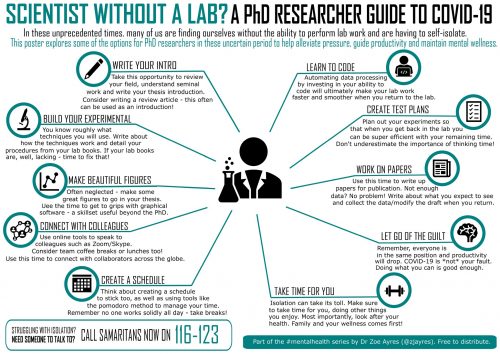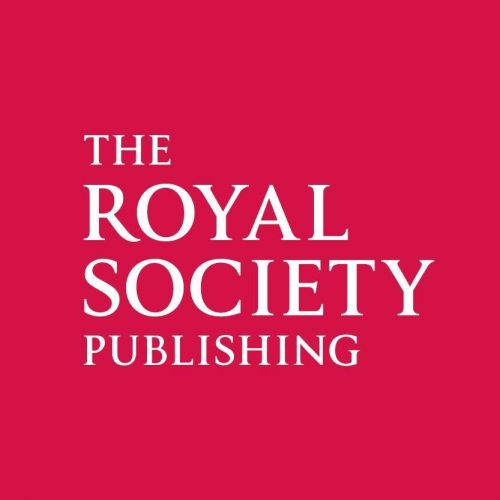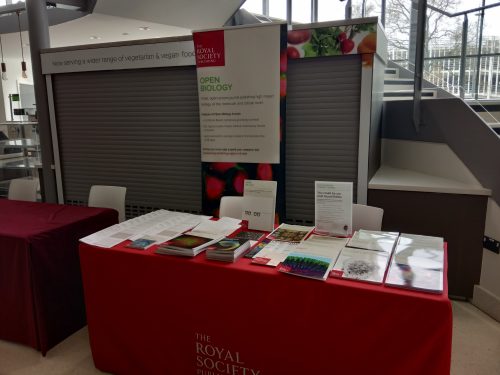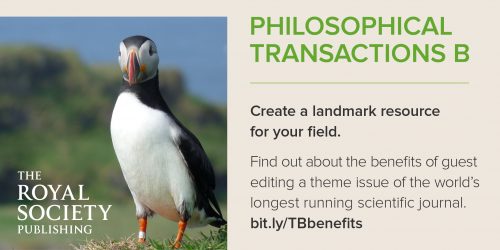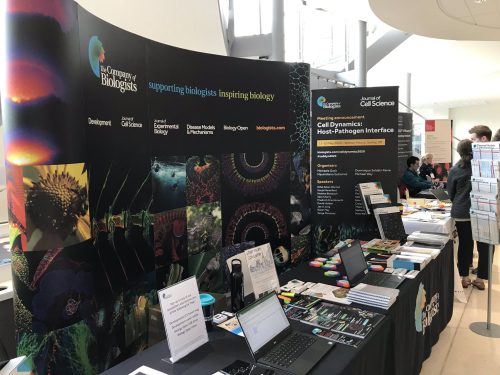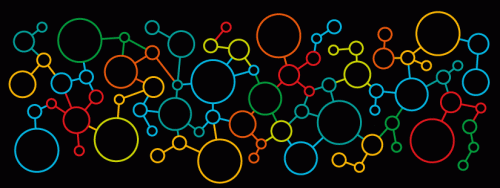Early development: the journey from oocyte to embryo
Posted by Amanda Amodeo, on 3 April 2020
Meeting report: 2nd EMBO workshop “Awakening of the genome: the maternal-to-zygotic transition”
Amanda Amodeo1*, Johanna Gassler2* and Ksenia Kuznetsova3*, Philip Zegerman4
*These authors contributed equally
- Lewis-Sigler Institute for Integrative Genomics. Carl Icahn Laboratory Washington Rd., Princeton University. Princeton, NJ 08544
- Institute of Molecular Biotechnology of the Austrian Academy of Sciences (IMBA), Vienna Biocenter (VBC), Dr. Bohr-Gasse 3, 1030 Vienna, Austria
- Max Planck Institute of Molecular Cell Biology and Genetics Pfotenhauerstrasse 108, 01307 Dresden, Germany
- Wellcome Trust/Cancer Research UK Gurdon Institute and Department of Biochemistry, The Henry Wellcome Building of Cancer and Developmental Biology, University of Cambridge CB2 1QN, UK
Abstract
The fusion of gametes to form a zygote triggers the complex journey of embryogenesis. The first zygotic divisions are driven largely by maternal gene products, pre-loaded in the oocyte. One of the first steps in embryogenesis is the transition from the expression of the maternal genome to the expression of the new genome of the zygote – the maternal to zygotic transition (MZT). This transition is essential for the correct patterning and differentiation of the embryo and encompasses dramatic changes in genome organisation, chromatin state, cell cycle length and RNA stability. The MZT therefore offers a unique window to understand how fundamental aspects of cell and developmental biology are coordinated. Here we report highlights of the 2019 EMBO workshop “Awakening of the genome: the maternal-to-zygotic transition”, a unique synergy of insights from multiple disciplines and model systems into early metazoan development.
In the beginning……
The transition from the oocyte, a highly differentiated and arrested cell type, to a fertilised, developmentally active, totipotent cell requires dramatic changes in almost all aspects of cell physiology. Across species, an influx of calcium ions is required for egg activation and preparation of the oocyte for embryogenesis. One role of calcium ions is to trigger the activation of the phosphatase calcineurin, but how calcinuerin triggers multiple events during oocyte maturation is poorly understood. Using Drosophila oocyte activation as a model, Mariana Wolfner (Cornell University, US) presented a proteomic analysis of the changes in the phospho-proteome that occur in a calcineurin-dependent manner. The hundreds of proteins regulated by calcinuerin 1 provide a unique dataset to understand how the many changes that must occur during oocyte maturation are coordinated. One example of this is the critical translation regulator GNU, which, as described by Emir Avilés Pagán (Orr-Weaver lab, MIT, US), is phosphorylated and inhibited in arrested Drosophila oocytes by CDK, but gets dephosphorylated by calcineurin leading to activation of the GNU-binding kinase PNG. PNG is critical to trigger mRNA translation in the embryo by phosphorylating and inhibiting translational repressors, such as TRAL (Trailer Hitch), PUM (Pumilio) and BICC (Bicaudal-C) 2. This phosphorylation/dephosphorylation switch at the oocyte to embryo transition is a common feature among metazoa. Indeed Swathi Arur (MD Anderson Cancer Center, University of Texas, US) showed that in C. elegans the miRNA processing enzyme Dicer is inhibited by phosphorylation in the oocyte, but gets dephosphorylated after egg activation. This regulation is important to impede degradation of maternal RNA in the oocyte. It is clear that switching the phosphorylation state of many key proteins at the oocyte to embryo stage permits the rapid and wholesale changes in cellular physiology that must occur at this transition.
So long mother, and thanks for all the mRNA.
Oocytes are loaded with mRNA encoding between one third (mouse, C.elegans) to three quarters (Drosophila, sea urchins, fish) of all protein coding genes 3. Following egg activation, subsets of the maternal mRNA stores are degraded, first by maternally contributed factors (early mRNA decay) and then by zygotically expressed factors (late decay). The timing and order of these degradation events is critical for the onset of zygotic transcription and proper embryogenesis.
Several processes control mRNA stability including RNA binding proteins (RBPs), polyA tail length, miRNAs and RNA modification. In mice, mRNA decay begins already in the oocyte. Heng Yu Fan (Zhejiang University, China) demonstrated that the mRNA deadenylation machinery comprising of the CCR4-NOT complex together with the adaptor protein BTG4 are important for degradation of mRNA in the mouse oocyte. An additional pathway involving terminal uridylation of mRNAs by the TUT4/TUT7 enzymes also promotes maternal mRNA clearance both in the oocyte and in the embryo 4.
In Drosophila, RNA binding proteins play key roles in the timing of mRNA degradation and translation. Large scale analysis of ribonucleoprotein complexes in Drosophila presented by Craig Smibert (University of Toronto, Canada) suggested that a high affinity binding site of an mRNA towards a repressor, such as Pumilio would induce early mRNA decay, whereas degradation in later stage embryos required Pumilio-mRNA stabilisation by other factors, such as zygotically expressed miRNAs. These mechanisms could explain the temporal regulation of different transcripts in spite of the presence of Pumilio throughout early embryogenesis. Such a temporal order is also enforced by post-translational regulation of the RNA binding proteins themselves. Olivia Rissland (University of Colorado, US) described a screen in Drosophila for factors that degrade a key global mRNA regulatory complex, ME31B/Cup/TRAL during the MZT. These data provided evidence that differential degradation of RBPs might influence the timing and mechanisms by which transcripts are inhibited during embryogenesis.
In addition to mRNA stability, mRNA translation is also a critical regulatory step for gene expression at the MZT. Mike Sheets (University of Wisconsin, US) showed that Bicc1 (Bicaudal-C) in Xenopus laevis inhibits mRNA translation through direct binding to the mRNA 5. As spatial gradients of Bicaudal-C are established during oogenesis, this likely explains the maternal role of Bicc1 in determining anterior-posterior patterning. Despite this, not all Bicc1 target mRNAs are inhibited to the same extent, suggesting that other properties of the mRNA, such as translation efficiency may also be important. In line with this, Ariel Bazzini (Stowers Institute, US) showed that the best predictor of the half-life of an mRNA in human cells 6 as well as in zebrafish embryos 7 is its codon usage.
The plethora of pathways that exist to control mRNA stability and expression in the early embryo, likely reflects the importance of the exact timing and amount of protein production during development. However, using quantitative proteomics in mouse and Xenopus embryos respectively, Michele Boiani (MPI Munster, Germany) and Martin Wühr (Princeton University, US) showed that proteins remain relatively constant until the morula stage in mice 8 or the MBT (mid-blastula transition) in frogs. By separating nuclear from cytoplasmic protein, Martin Wühr showed in Xenopus that the nuclear fraction of the proteome changes during early development, which may explain some of the ordering of nuclear events during embryogenesis such as PolII versus PolIII transcription. Together with the multitude of pathways that regulate maternal mRNA, this suggests that post-translational regulation of maternal protein, including protein localization and modifications, must also be critical during the early embryonic cycles.
OK Child, over to you…. Setting up the transcriptional state of the zygote
The transition from maternal to zygotic control of the developing embryo requires not only the erasure of maternal RNA and proteins, but the activation of zygotic transcription. The reprogramming of parental DNA, combined with the correct timing of gene expression from the zygotic DNA requires major chromatin and transcriptional remodelling.
Nuclear organization of early pre-ZGA embryos is characterized by the absence of heterochromatin and the de novo acquisition of histone modifications and DNA methylation. Despite this, many chromatin-modifying enzymes, such as H3K9 methyltransferases, are expressed before the ZGA, raising the possibility that there are maternally-deposited inhibitors of heterochromatinisation. Mary Goll (University of Georgia, USA) provided evidence of one such inhibitor, the chromatin remodeller Smarca2 in zebrafish 9. Removal of Smarca2 is critical for global heterochromatin formation and interestingly Smarca2 clearance is driven by zygotic transcription of the miRNA miR-430, which links chromatin formation to the ZGA itself. Analysis of gene specific chromatin marks in Xenopus however, (Gert Jan Veenstra, Radboud University, Netherlands) demonstrated that several modifications, such as H3 K4 and H3 K27 trimethylation, arise in the absence of transcription in the early embryo. Indeed in Drosophila, Nicola Iovino (MPI Freiburg, Germany) showed that maternally inherited H3 K27 methylation is critical for inhibiting premature transcription before the ZGA 10. A similar role was proposed by Shifeng Xue (A Star, Singapore) for the chromosomal protein Smchd1 in zebrafish, whereby maternally supplied Smchd1 regulates DNA methylation and repression of embryonic genes. Therefore, both maternal and zygotic factors are important for determining the establishment of chromatin modifications and zygotic transcription.
Although the chromatin modification and DNA methylation landscape are remodelled in the early embryo, a key question is how this is directed to ensure that the right genes are turned on at the right time. Brad Cairns (University of Utah, USA) presented work in Zebrafish showing that key nucleosomes established before ZGA act as “placeholders” to determine the hypomethylated regions of the genome 11. At the ZGA these “placeholder” nucleosomes gain bivalency (the ability to switch between active and repressed epigenetic states) and are key determinants for turning housekeeping genes on, but developmental genes off. A critical feature of the placeholder nucleosomes is that they contain a histone variant (H2AZ). Genevieve Almouzni (Institut Curie, France) and Amanda Amodeo (Princeton University, USA) investigated the role of a different histone variant H3.3 during the ZGA in Xenopus and Drosophila. Amodeo demonstrated the large scale replacement of H3 by H3.3 on chromatin 12, although the functional significance of variant histone incorporation is poorly understood in Drosophila. However in Xenopus, Almouzni showed that the S31 residue which is specific to the H3.3 variant is uniquely essential for normal development through gastrulation 13. Together these results show an important role for histone variants in marking sites of future transcription and allowing normal developmental progression.
All hail the pioneers
The dramatic changes in chromatin during the ZGA are also accompanied by changes in transcription factor (TF) interactions with DNA. Whether chromatin modifications are a cause or a consequence of TF recruitment remains an important question. Of particular significance are the ‘pioneer’ factors, which are a unique class of TFs that bind to chromatin 14 and establish regions of accessibility and gene activation. A key pioneer factor in Drosophila is the transcriptional activator Zelda, which Melissa Harrison (University of Wisconsin, USA) demonstrated is needed continuously throughout early development for both the minor wave of zygotic transcription and the later major wave of transcription 15. How Zelda achieves transcriptional activation is poorly understood, but Chris Rushlow (NYU, USA) showed that Zelda modifies the probability, timing and rate of transcription of key downstream patterning genes 16. In contrast to Zelda, which is a global activator, Angela Stathopoulos (Caltech, USA) examined the role of broadly expressed repressors in the timing of ZGA in Drosophila. She found that both Runt and Su(H) act as position independent repressors in the pre-MZT Drosophila embryo 17. These findings suggest the possibility that competition between activators and repressors may be a general feature in the timing and spatial activation of different genes during ZGA.
To understand the timing of chromatin changes relative to TF factor binding Shelby Blythe (Northwestern, USA) used ATACseq in Drosophila embryos to show that cell fate specific chromatin states result from the binding of maternally deposited transcription factors on an initial ground state chromatin, pre-MBT 18. In zebrafish, Liyun Miao (Antonio Giraldez lab, Yale, USA) reported that key TFs of early transcription during zebrafish ZGA, Nanog/Oct4/SoxB1, are required to open the chromatin prior to histone acetylation. In addition, Daria Onichtchouk (University of Freiburg, Germany) used MNase seq to show that Nanog/Oct4/SoxB1 are initially recruited to high nucleosome affinity regions (HNARs) within the genome, while subsequently establishing open chromatin domains during ZGA 19. Consistently in Xenopus, Ken Cho (University of California, USA) showed that maternally deposited pioneer transcription factors such as Foxh1 pre-mark enhancers before transcription and before the generation of histone modifications 20. Together, these findings suggest that pioneer transcription factors may be upstream of transcription and chromatin changes during the ZGA across species. While the order of events is important, it is clear that we do not yet know all the factors involved in establishing transcriptional activation at the ZGA as Celia Alda-Catalinas (Wolf Reik lab, Babraham Institute, UK) presented a CRISPR screen in mouse ESCs, identifying new candidates that positively regulate genome activation 21.
ZGA in 3D
The emergence of totipotency and the subsequent specification of zygotic transcription at the ZGA results in major rearrangements in the spatial positioning and the 3D architecture of chromatin. Maria Elena Torres-Padilla (Helmholtz Institute, Munich, Germany) used Dam-ID to show that lamina associated domains (LADs) of chromosomes are established shortly after fertilization in a parental specific manner 22. Paternal LAD formation may be dependent on de novo establishment of H3K4 methylation providing new insights into the temporal order of chromatin architecture establishment in early embryos.
Topologically associated chromatin domains (TADs) are established during the MZT in Drosophila. Gabriel Cavalheiro (Eileen Furlong lab, EMBL, Germany) investigated which insulator proteins and TFs are required for TAD formation and demonstrated that distinct loci establish chromatin organization by different mechanisms. Interestingly using hybrid Drosophila embryos to distinguish between homologous chromosomes, Jelena Erceg, (Ting Wu lab, Harvard Medical School, USA) demonstrated the existence of trans-homolog TADs, which correlate with gene expression and Zelda binding 23.
To understand how pioneer factors physically change chromatin Thomas Quail (Jan Brugues lab, MPI Dresden, Germany) used reconstituted Xenopus egg extracts and fluorescent dCas9 to show that pioneer factor FoxA1 leads to increased rates of chromatin diffusion. While studies in zebrafish embryos presented by Nadine Vastenhouw (MPI Dresden, Germany) suggested that transcribed RNA together with RNA binding proteins are required for euchromatic domain establishment. Such organization might be explained by microphase separation of euchromatin, enabling interactions inside specific regions of the nucleus 24. Further evidence of such compartmentalisation was demonstrated by Ferenc Mueller (University of Birmingham, UK). Using live imaging of native transcription he showed that first transcription in zebrafish (prior to canonical ZGA), such as at the miR-430 locus, occurs in defined nuclear compartments 25, which may be a mechanism to safe-guard early transcription even before the embryo becomes permissive for bulk zygotic gene expression.
Transposon activation, the cost of pluripotency?
Up to 50% of the mammalian genome is made of integrated transposable elements (TEs). The majority of TEs (95%) are retroelements (ERVs, LINES, SINES etc). Reprogramming during early embryogenesis creates a dangerous window where TEs could be de-repressed. Small RNAs called piRNAs expressed in the embryo and germline repress LINE elements through transcriptional and post-transcriptional silencing. Donal O’Carroll (CRM, UK) presented a novel factor in mice called Spocd1 that represses LINE expression through DNA methylation. Despite this, young TEs show a peak of activation during early embryonic development and Didier Trono (EPFL, Switzerland) demonstrated that these young elements have a positive role in increasing chromatin accessibility and enabling human embryonic genome activation, but specialised repressors of the KZFP family (Krüppel-associated box (KRAB)-containing zinc finger proteins) are induced to silence these TEs in a negative feedback loop 26. Juanma Vaquerizas (MPI for Molecular Biomedicine, Muenster) presented a low input chromatin conformation capture technique (low-C) to study the link between TE activation and chromatin architecture and its influence on embryonic transcription 27. He demonstrated that the Murine Endogenous Retroviral Element (MuERV-L/MERVL) family of transposable elements drive the reorganisation of TAD boundaries and activation of a subset of genes in early 2-cell mouse embryo–like cells. Together these studies point towards roles for TE-based regulatory sequences as chromatin control elements, which are co-opted during embryonic development.
Cell cycle regulation in the early embryo
The oocyte to embryo transition is not only associated with transcriptional rewiring but is also associated with dramatic changes in cell cycle control across species. Marc Kirschner (Harvard Medical School, USA) described how the lengthening of the cell cycle is a primary event at the MBT in Xenopus, before the onset of bulk zygotic transcription and cell motility 28. The importance of the rapid early embryonic cell divisions was underscored by K. Neugebauer (Yale, USA) who showed that rapid cell-cycle signalling generates a significant energetic cost in the zebrafish embryo 29. Despite this, the fundamental functions of cell cycle control in coordinating events of the MBT remain poorly understood.
The lengthening of the cell cycle at the MBT is characterised by changes in replication timing during S-phase. Christopher Sansam (OMRF, USA) showed that in zebrafish, replication timing changes during the first 10 hours post fertilization with the most dramatic changes occurring on chromosome 4 30. Unlike Drosophila however 31, the global regulator of chromatin and replication timing Rif1 is not a major contributor to cell cycle length in zebrafish. A significant contributor to cell cycle lengthening is the DNA damage checkpoint, which in Drosophila is activated by transcription-replication conflicts 32. Anahi Molla-Herman (Huynh lab, Collège de France, France) showed that RNA-DNA hybrids formed at highly transcribed tRNA genes might be responsible for checkpoint activation and proper cell cycle timing at the MBT in Drosophila.
Outlook and conclusions
Understanding the coordination of dramatic changes in gene expression, chromatin remodelling, reprogramming, cell cycle as well as a host of other processes which characterise the oocyte to embryo transition requires the coming together of scientists from a multitude of disciplines. This topic benefits from the universality and evolutionary conservation of these control mechanisms as it brings together information from a host of model systems from planaria (Jochen Rink, MPI Dresden) to the marsupial fat-tailed dunnart (Stephen Frankenberg, University of Melbourne, Australia) and importantly to human embryos (Sanna Vuoristo, University of Helsinki, Finland). As quoted by Marc Kirschner “underlying the extreme complexity we may discover a simplicity which now escapes us” (FG Hopkins 1913). The 2019 EMBO workshop “Awakening of the genome: the maternal-to-zygotic transition” provided a unique opportunity to understand the simplicity behind how gametes are rewired to make embryos.
References
- Zhang, X. et al. Quantitative Mass Spectrometry to Interrogate Proteomic Heterogeneity in Metastatic Lung Adenocarcinoma and Validate a Novel Somatic Mutation CDK12-G879V. Mol. Cell. Proteomics 18, 622–641 (2019).
- Hara, M. et al. Identification of PNG kinase substrates uncovers interactions with the translational repressor TRAL in the oocyte-to-embryo transition. Elife 7, (2018).
- Vastenhouw, N. L., Cao, W. X. & Lipshitz, H. D. The maternal-to-zygotic transition revisited. Development 146, (2019).
- Sha, Q.-Q. et al. Characterization of zygotic genome activation-dependent maternal mRNA clearance in mouse. Nucleic Acids Res. 48, 879–894 (2020).
- Dowdle, M. E. et al. A single KH domain in Bicaudal-C links mRNA binding and translational repression functions to maternal development. Development 146, (2019).
- Wu, Q. et al. Translation affects mRNA stability in a codon-dependent manner in human cells. Elife 8, (2019).
- Bazzini, A. A. et al. Codon identity regulates mRNA stability and translation efficiency during the maternal‐to‐zygotic transition. EMBO J. 35, 2087–2103 (2016).
- Israel, S., Casser, E., Drexler, H. C. A., Fuellen, G. & Boiani, M. A framework for TRIM21-mediated protein depletion in early mouse embryos: recapitulation of Tead4 null phenotype over three days. BMC Genomics 20, 755 (2019).
- Laue, K., Rajshekar, S., Courtney, A. J., Lewis, Z. A. & Goll, M. G. The maternal to zygotic transition regulates genome-wide heterochromatin establishment in the zebrafish embryo. Nat. Commun. 10, 1551 (2019).
- Zenk, F. et al. Germ line–inherited H3K27me3 restricts enhancer function during maternal-to-zygotic transition. Science (80-. ). 357, 212–216 (2017).
- Murphy, P. J., Wu, S. F., James, C. R., Wike, C. L. & Cairns, B. R. Placeholder Nucleosomes Underlie Germline-to-Embryo DNA Methylation Reprogramming. Cell 172, 993-1006.e13 (2018).
- Shindo, Y. & Amodeo, A. A. Dynamics of Free and Chromatin-Bound Histone H3 during Early Embryogenesis. Curr. Biol. 29, 359-366.e4 (2019).
- Sitbon, D., Boyarchuk, E. & Almouzni, G. Regardless of the deposition pathway, aminoacid 31 in histone variant H3 is essential at gastrulation in Xenopus. bioRxiv 612515 (2019). doi:10.1101/612515
- Zaret, K. S. & Carroll, J. S. Pioneer transcription factors: establishing competence for gene expression. Genes Dev. 25, 2227–2241 (2011).
- McDaniel, S. L. et al. Continued Activity of the Pioneer Factor Zelda Is Required to Drive Zygotic Genome Activation. Mol. Cell 74, 185-195.e4 (2019).
- Yamada, S. et al. The Drosophila Pioneer Factor Zelda Modulates the Nuclear Microenvironment of a Dorsal Target Enhancer to Potentiate Transcriptional Output. Curr. Biol. 29, 1387-1393.e5 (2019).
- Koromila, T. & Stathopoulos, A. Distinct Roles of Broadly Expressed Repressors Support Dynamic Enhancer Action and Change in Time. Cell Rep. 28, 855-863.e5 (2019).
- Soluri, I. V., Zumerling, L. M., Parra, O. A. P., Clark, E. G. & Blythe, S. A. Zygotic pioneer factor activity of Odd-paired/Zic is necessary for establishing the Drosophila Segmentation Network. bioRxiv 852707 (2019). doi:10.1101/852707
- Veil, M., Yampolsky, L. Y., Grüning, B. & Onichtchouk, D. Pou5f3, SoxB1, and Nanog remodel chromatin on high nucleosome affinity regions at zygotic genome activation. Genome Res. 29, 383–395 (2019).
- Paraiso, K. D. et al. Endodermal Maternal Transcription Factors Establish Super-Enhancers during Zygotic Genome Activation. Cell Rep. 27, 2962-2977.e5 (2019).
- Alda-Catalinas, C. et al. A single-cell transcriptomics CRISPR-activation screen identifies new epigenetic regulators of zygotic genome activation. bioRxiv 741371 (2019). doi:10.1101/741371
- Borsos, M. et al. Genome–lamina interactions are established de novo in the early mouse embryo. Nature 569, 729–733 (2019).
- Erceg, J. et al. The genome-wide multi-layered architecture of chromosome pairing in early Drosophila embryos. Nat. Commun. 10, 4486 (2019).
- Hilbert, L. et al. Transcription organizes euchromatin similar to an active microemulsion. bioRxiv 234112 (2018). doi:10.1101/234112
- Hadzhiev, Y. et al. A cell cycle-coordinated Polymerase II transcription compartment encompasses gene expression before global genome activation. Nat. Commun. 10, 691 (2019).
- Pontis, J. et al. Hominoid-Specific Transposable Elements and KZFPs Facilitate Human Embryonic Genome Activation and Control Transcription in Naive Human ESCs. Cell Stem Cell 24, 724-735.e5 (2019).
- Kruse, K. et al. Transposable elements drive reorganisation of 3D chromatin during early embryogenesis. bioRxiv 523712 (2019). doi:10.1101/523712
- Kimelman, D., Kirschner, M. & Scherson, T. The events of the midblastula transition in Xenopus are regulated by changes in the cell cycle. Cell 48, 399–407 (1987).
- Rodenfels, J., Neugebauer, K. M. & Howard, J. Heat Oscillations Driven by the Embryonic Cell Cycle Reveal the Energetic Costs of Signaling. Dev. Cell 48, 646-658.e6 (2019).
- Siefert, J. C., Georgescu, C., Wren, J. D., Koren, A. & Sansam, C. L. DNA replication timing during development anticipates transcriptional programs and parallels enhancer activation. Genome Res. 27, 1406–1416 (2017).
- Seller, C. A. & O’Farrell, P. H. Rif1 prolongs the embryonic S phase at the Drosophila mid-blastula transition. PLOS Biol. 16, e2005687 (2018).
- Blythe, S. A. & Wieschaus, E. F. Zygotic Genome Activation Triggers the DNA Replication Checkpoint at the Midblastula Transition. Cell 160, 1169–1181 (2015).
Acknowledgements
We apologize to all those whose work we have not been able to include due to space limitations and we thank EMBO for funding this meeting. J.G. is supported by the European Research Council (ERC-StG-336460ChromHeritance to Kikuë Tachibana) and the L’Oréal Austria Fellowship for Women in Science and is an associated student of the DK Chromosome Dynamics (W1238-B20) supported by the Austrian Science Fund (FWF). K.K. is supported by the Max Planck Society and Deutsche Forschungsgemeinschaft (DFG, SPP2191).


 (4 votes)
(4 votes)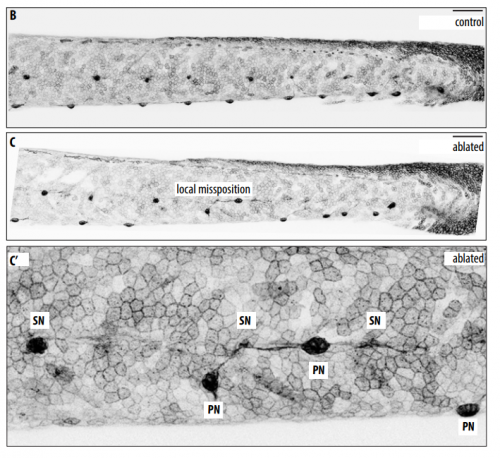
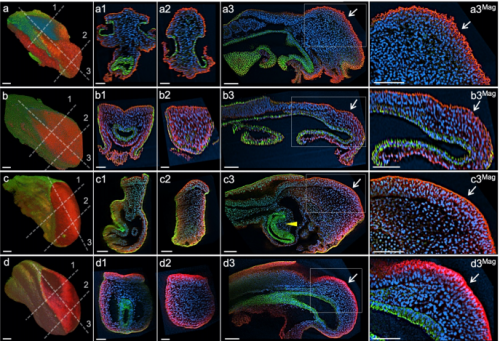
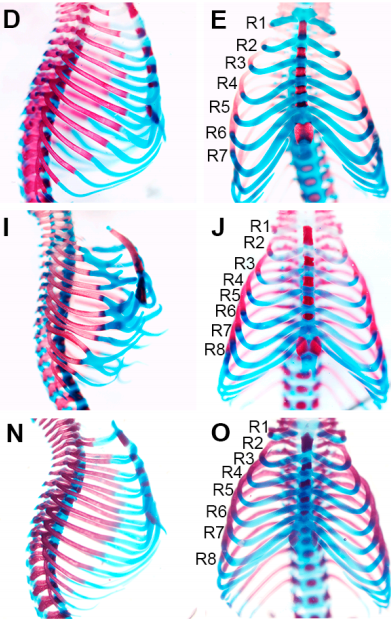
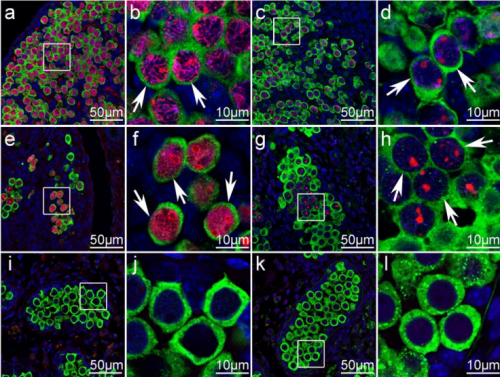
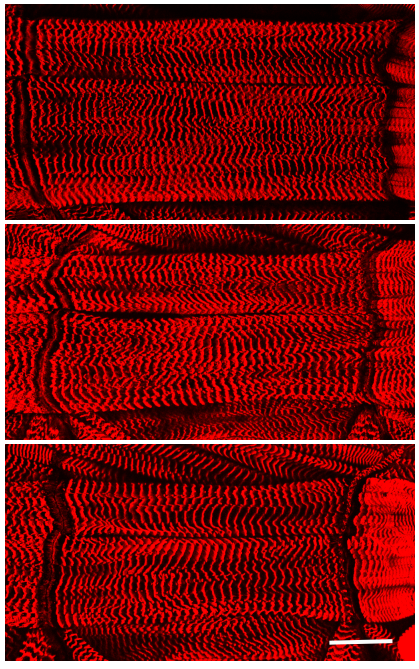

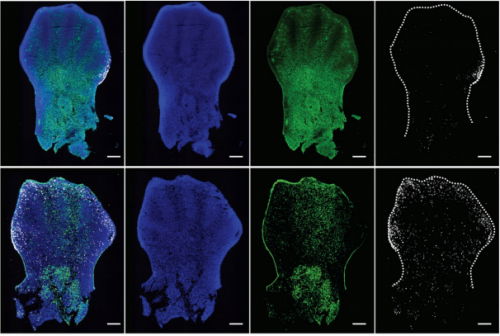

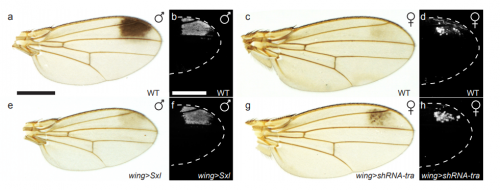
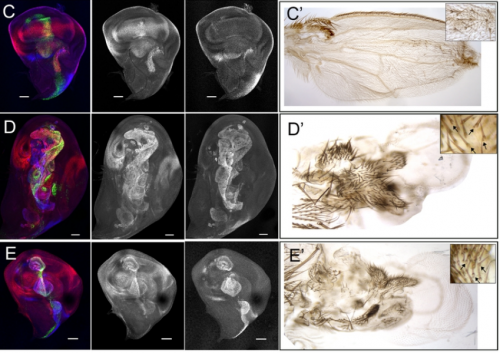
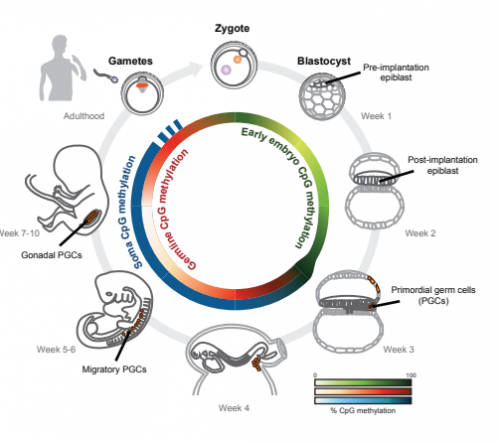

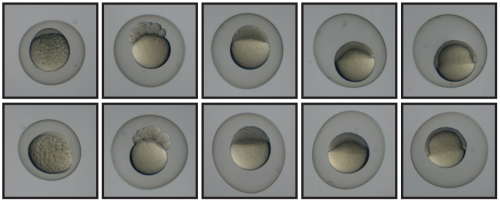

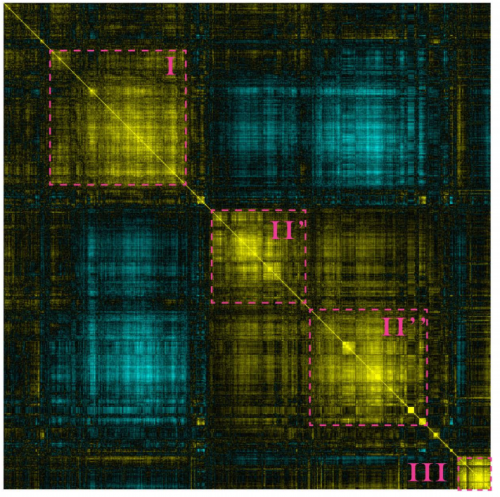
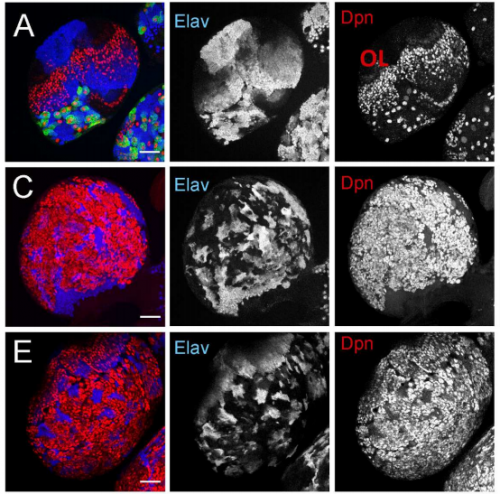
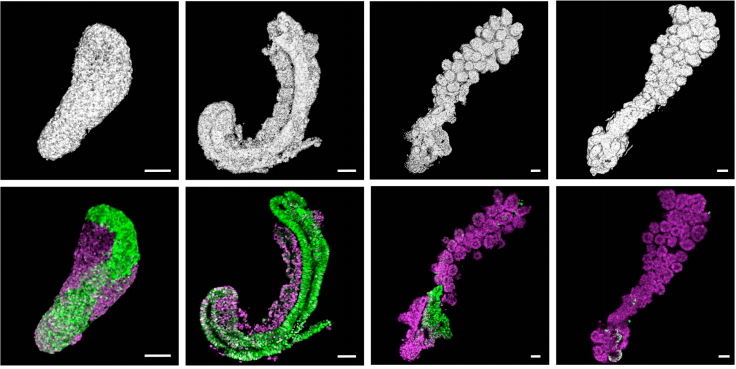
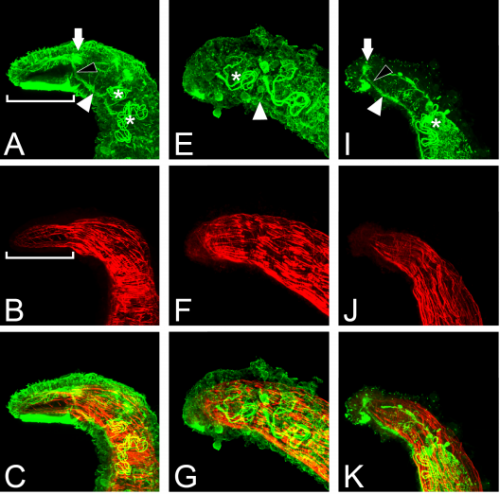
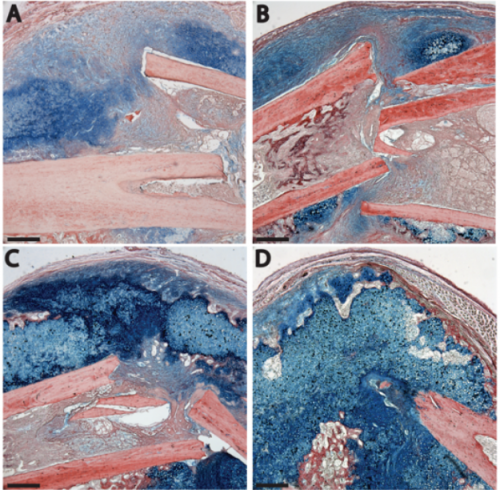
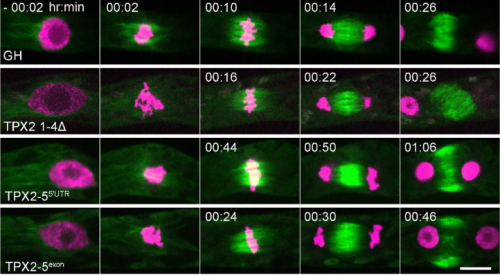
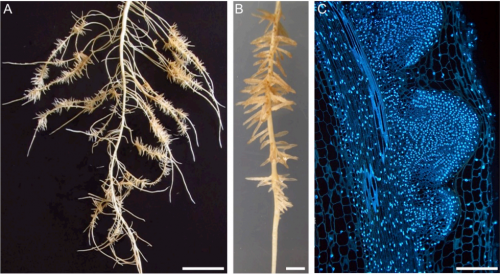
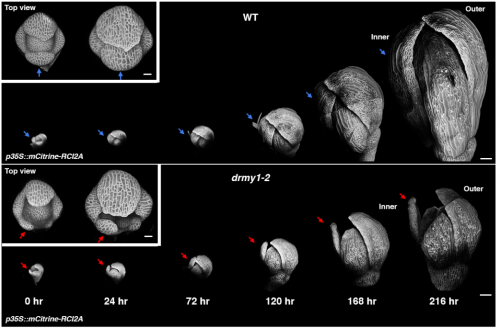
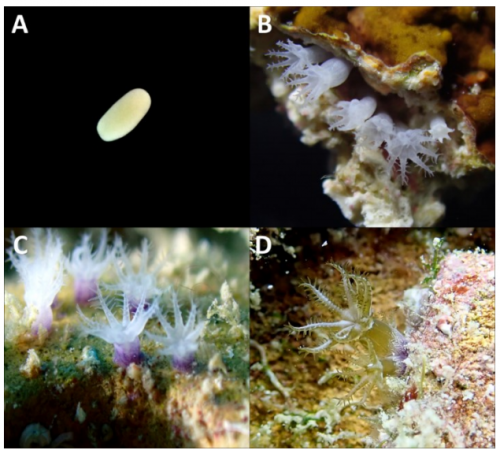
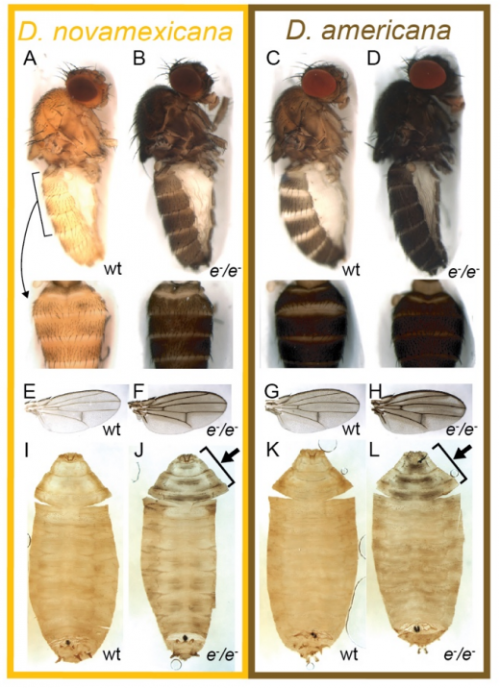
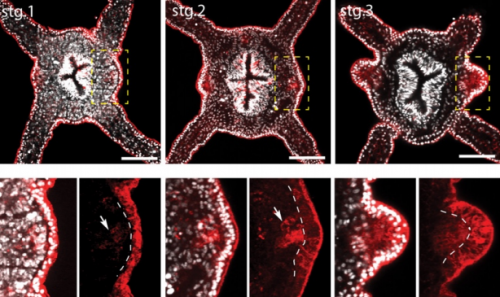
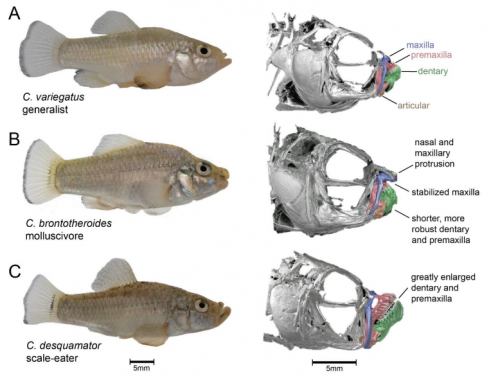


 (No Ratings Yet)
(No Ratings Yet)
